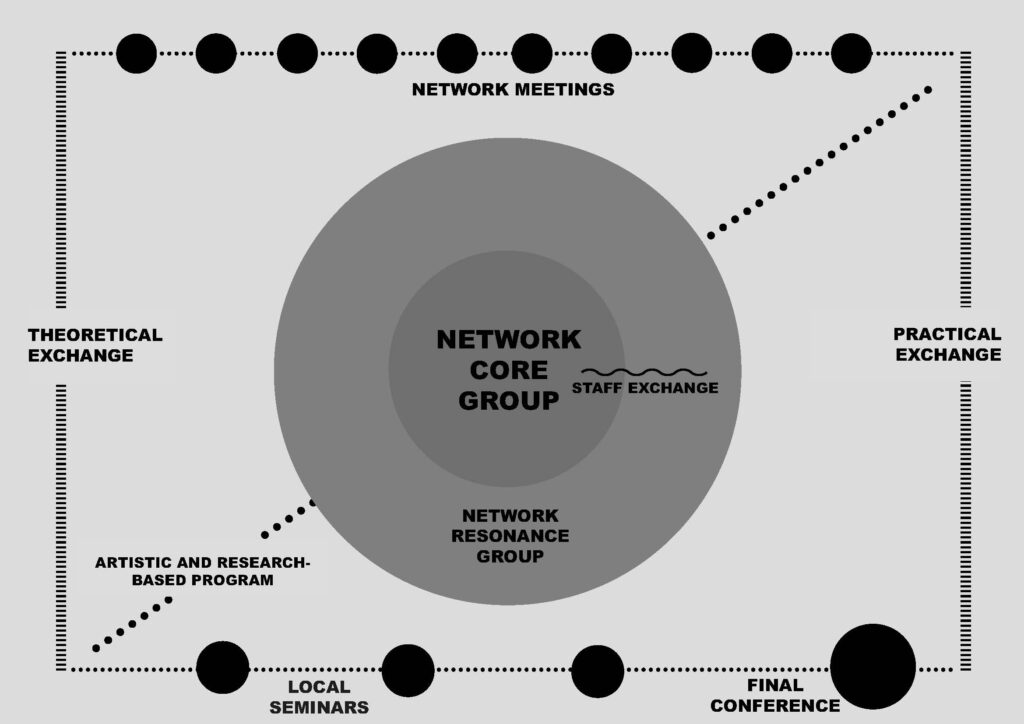MALMÖ KONSTMUSEUM (SE), MALMÖ ART MUSEUM
Founded in 1841, Malmö Konstmuseum is one of the leading art museums in Scandinavia. The museum building, built in 1937, is located in the Malmö Castle complex in Malmö in southern Sweden. The museum is governed by the City of Malmö and houses several important collections and historical donations, including major collections on Nordic modern and contemporary art. The collection is contains over 40.000 works, primarily covering the period from the 16th century to the present day. The Art Museum is in the midst of a major transformation and is working to open the museum to a wider and larger audience and is working to ensure that a new museum building can be built and opened in the near future.
MUSEET FOR SAMTIDSKUNST (DK), THE MUSEUM OF CONTEMPORARY ART DENMARK
The idea of establishing a museum of contemporary art in Roskilde was born in the mid-1980s among a group of local citizens looking to create a platform for new experimental art.Support from Roskilde Municipality made it possible to open the Museum of Contemporary Art in 1991. A few years later, in 1994, the museum was approved by the government, making it Denmark’s first museum of contemporary art under the Museum Act, with special responsibility for temporal and hybrid art forms. For the first 30 years, the museum was located in the Yellow Mansion in the city of Roskilde, showcasing the latest art forms in solo and group exhibitions. At the same time, the museum was present in urban spaces with the ACTS performance festivals, the Images 16 biennial and, starting in 2012, the Light Festival Parade which has become a tradition at the city’s annual Light Festival.
In 2021, to better showcase hybrid and transient art formats, the museum became Denmark’s first and only art museum without a permanent building. The aim is to create an accessible, engaged and mutable museum exploring new ways of communicating contemporary art.
TRONDHEIM KUNSTMUSEUM (N), TRONDHEIM ART MUSEUM
Trondheim Kunstmuseum shows exhibitions of both contemporary art and works from its extensive collection of Norwegian and international art. Trondheim Kunstmuseum was founded as Trondhjem Kunstforening in 1845, and is today a consolidated part of Museene I Sør-Trøndelag. With the ambition to be an important and innovative regional and European art museum the museum produces 6 to 10 exhibitions annually spanning over two venues. Trondheim Kunstmuseum is currently going through the first steps of a process of relocation, reinvention and proposed artistic merger with Nordenfjeldske Kunstindustrimuseum (National Museum of Craft and Design). In connection to this, the museum takes the opportunity to look at the roles and expectations that form the relationship between an art institution and its public.
NYKYTAITEEN MUSEO KIASMA (FI), MUSEUM OF CONTEMPORARY ART
The Museum of Contemporary Art was established in 1990. Since 1998, it operates at the heart of Helsinki city in the Kiasma building, designed by Steven Holl. Today Kiasma is the largest museum for contemporary art in Finland, ranking among the main Nordic institutions of contemporary art too. Kiasma is part of the Finnish National Gallery. The mission of Kiasma is to present, collect, commission and preserve the art of our time: It offers interesting encounters with art and new perspectives on life. It is a place where people meet art and where everyone is welcome. It collects current contemporary art that reflects the times as broadly as possible.
KUNSTEN SOM FORUM (DK), ART AS FORUM
The New Carlsberg Foundation research centre Art as Forum at University of Copenhagen develops a specific branch of art studies dedicated to the particular mode of existence of art that pertains to its relation to the public sphere, embracing both the public that art presupposes and the actual publics that it addresses. In aesthetics and art studies, the experience of art has mostly been conceptualised as an individual matter. But it is also a defining feature of art in the modern period, that the encounter with artworks places the beholder in a particular community of others that share this encounter. In this sense, art—in all its forms and shapes—constitute the premises of a communal experience.
By focusing on art and communality, the centre ambitions to provide an important supplement to traditional art studies and eventually also enhance our tools to analyse individual artworks, to understand their histories and to measure the significance of aesthetic experience. Broadening the conceptual and interpretive approaches to art, Art as Forum furthermore hopes to be able to give a more comprehensive description of the societal value of art.

Network organisation and activities
MUSEUM WHY ARTISTS IN RESIDENCE
Apparatus 22 (RO/BE)
Floating Museum (US)
MUSEUM WHY RESSONANCE NETWORK
Whose Museum (SE)
Tom Duncan
Margareta von Oswald
Matylda Krzykowski
Sebastian Cichocki
